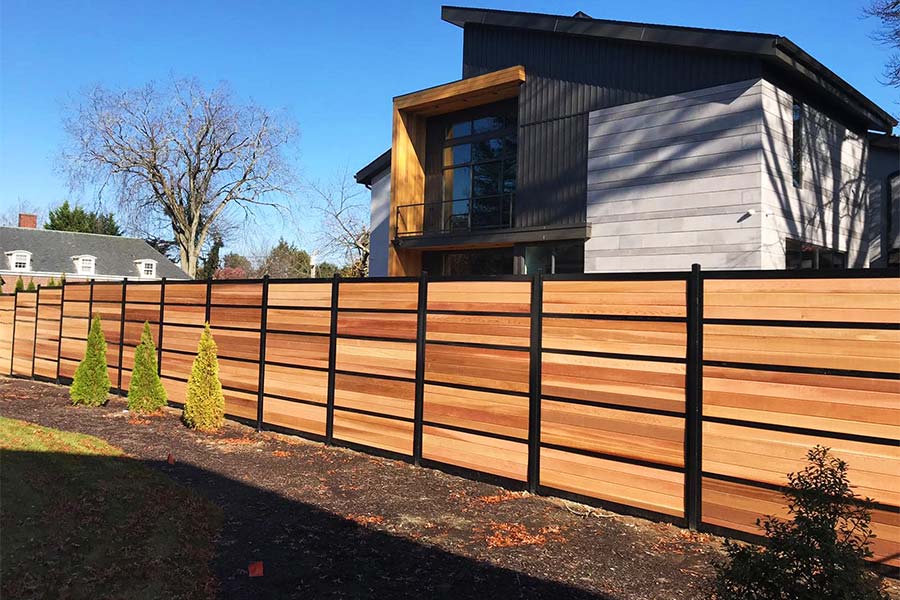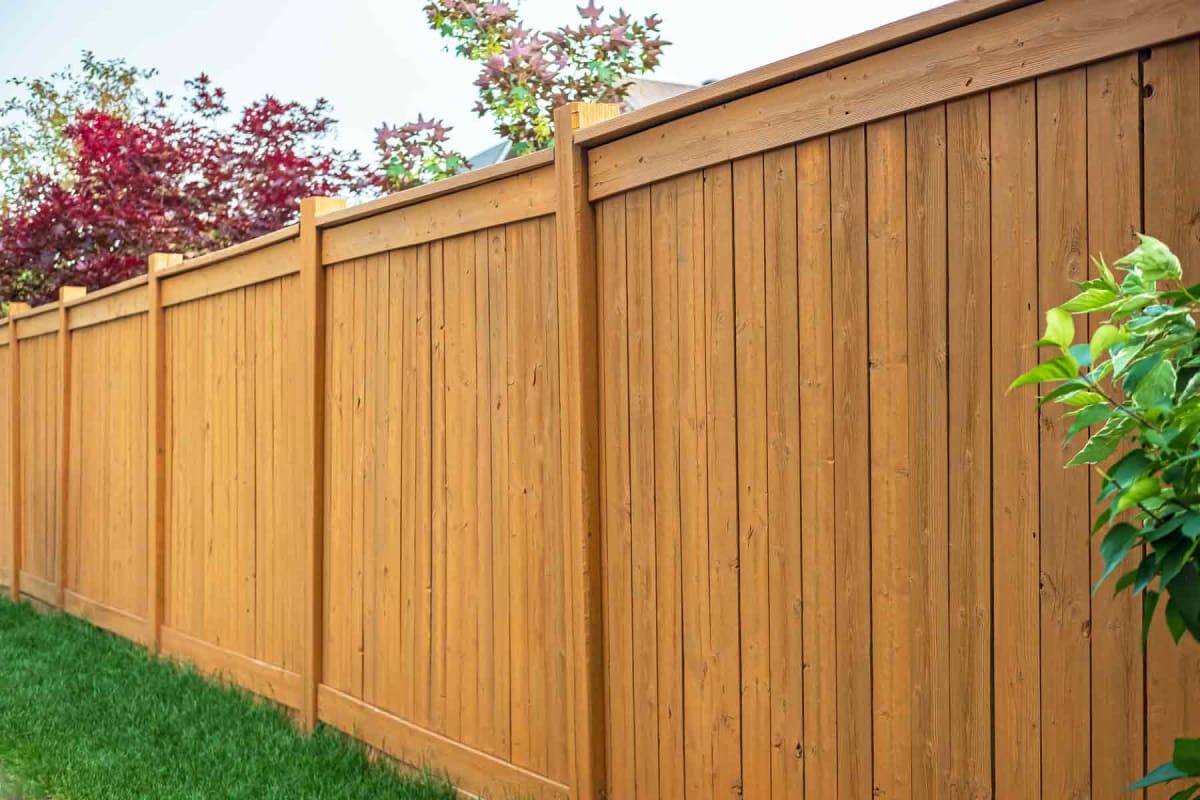All Categories
Featured
Your fencing is an investment that provides curb, safety, and personal privacy allure. Each fence kind has special upkeep needs based on its material's longevity, direct exposure to the components, and various other variables.
![]()
Climate Protection: Use a high-quality sealer or tarnish every 2-- 3 years to secure the wood from wetness and UV rays. For extreme climates, yearly reapplication might be needed. Cleaning: Use a yard hose or a pressure washing machine on a reduced setting to get rid of dirt and mildew. Comply with up with a light cleaning agent for stubborn stains. Fixings: Inspect for loosened or rotting boards and replace them immediately. Tighten up screws or nails to maintain the structure stable. Pest Control: Use termite-resistant timber or deal with the fence with parasite repellents to stay clear of infestations. 2. Plastic Fences. Vinyl fences are preferred for their sturdiness and marginal maintenance demands.
Cleaning: Clean the surface area with a yard hose pipe or a mix of soap and water to eliminate dirt and algae. For difficult spots, use a soft-bristle brush or a vinyl-specific cleaner. Evaluations: Frequently evaluate for splits or bending, particularly after hefty influences or strong winds. Repair work: Replace any busted areas quickly. Plastic fencings typically utilize modular parts, making repairs straightforward. 3. Chain-Link Fences. Chain-link fences are cost-efficient and tough yet call for regular interest to stop corrosion.
Corrosion Elimination: Use a cord brush to eliminate rust from revealed locations, after that use a rust-inhibiting spray to protect the steel. Cleansing: Hose down the fencing consistently to eliminate dust. For grime, use soapy water and a stiff-bristle brush. Fixings: Tighten up any drooping sections or change damaged web links to keep security. 4. Wrought Iron Fences. Wrought iron fencings supply sturdiness and sophistication yet are vulnerable to rust if not effectively kept.
![]()
Corrosion Prevention: Scratch off rust places with sandpaper and use a rust-resistant primer followed by outside metal paint. Examine for corrosion at the very least twice a year. Cleansing: Clean down with a towel and soapy water to keep the finish. Avoid unpleasant cleaners that can harm the surface. Painting: Repaint every couple of years to secure the steel from rust and maintain it looking fresh. 5. Light weight aluminum Fences. Light weight aluminum fences are light-weight, sturdy, and resistant to corrosion, calling for less maintenance contrasted to wrought iron.
Cleansing: Clean with soap and water to get rid of dirt and dirt. Wash completely to avoid residue. Inspections: Inspect for loose hardware or damages, especially after storms. Safeguard or replace components as needed. Touch-Ups: Use paint to damaged or cracked areas to stop damage to the safety covering. 6. Composite Fences. Compound fencings are made from a blend of timber and plastic, integrating resilience with very little maintenance.
![]()
Cleaning: Use a hose or a soft brush with soap and water to cleanse the surface area. Stay clear of utilizing rough chemicals. Assessments: Try to find warping, particularly in severe warm. Tighten up or replace any damaged panels. Form Avoidance: While composite products stand up to rot, keep the fencing tidy and dry to prevent mold and mildew build-up. 7. Bamboo Fences. Bamboo is an environmentally friendly option yet calls for careful upkeep to maintain its look and durability.
Securing: Apply a protective sealant or varnish every 2-- 3 years to defend against dampness and UV damage. Cleaning: Clean with light soap and a soft sponge or brush. Prevent high-pressure washing, which can harm bamboo fibers. Fixings: Change harmed posts or areas to preserve architectural honesty and appearance. General Upkeep Tips for All Fencing Types. Normal Evaluations: Inspect your fence at the very least as soon as every season for damage, wear, or loosened parts. Trimming Greenery: Keep plants, creeping plants, and hedges away from the fencing to avoid wetness damage and lessen pest activity. Seasonal Changes: In areas with snow, stay clear of stacking snow versus your fence to stop architectural stress. In warm climates, evaluate for heat-related bending or fading. Conclusion. Each fence product has its unique upkeep requirements, however a proactive approach to care can prolong its lifespan and maintain it looking its finest. Wooden fencings require more attention contrasted to plastic or aluminum, however each product benefits from routine cleaning, inspections, and prompt repair work. By tailoring your upkeep practices to the sort of fencing you own, you'll make certain that it proceeds to provide safety and security, curb, and privacy charm for years to come.

- Wooden Fencings. Wood fences are valued for their all-natural look however need regular maintenance to stop damage.
Climate Protection: Use a high-quality sealer or tarnish every 2-- 3 years to secure the wood from wetness and UV rays. For extreme climates, yearly reapplication might be needed. Cleaning: Use a yard hose or a pressure washing machine on a reduced setting to get rid of dirt and mildew. Comply with up with a light cleaning agent for stubborn stains. Fixings: Inspect for loosened or rotting boards and replace them immediately. Tighten up screws or nails to maintain the structure stable. Pest Control: Use termite-resistant timber or deal with the fence with parasite repellents to stay clear of infestations. 2. Plastic Fences. Vinyl fences are preferred for their sturdiness and marginal maintenance demands.
Cleaning: Clean the surface area with a yard hose pipe or a mix of soap and water to eliminate dirt and algae. For difficult spots, use a soft-bristle brush or a vinyl-specific cleaner. Evaluations: Frequently evaluate for splits or bending, particularly after hefty influences or strong winds. Repair work: Replace any busted areas quickly. Plastic fencings typically utilize modular parts, making repairs straightforward. 3. Chain-Link Fences. Chain-link fences are cost-efficient and tough yet call for regular interest to stop corrosion.
Corrosion Elimination: Use a cord brush to eliminate rust from revealed locations, after that use a rust-inhibiting spray to protect the steel. Cleansing: Hose down the fencing consistently to eliminate dust. For grime, use soapy water and a stiff-bristle brush. Fixings: Tighten up any drooping sections or change damaged web links to keep security. 4. Wrought Iron Fences. Wrought iron fencings supply sturdiness and sophistication yet are vulnerable to rust if not effectively kept.

Corrosion Prevention: Scratch off rust places with sandpaper and use a rust-resistant primer followed by outside metal paint. Examine for corrosion at the very least twice a year. Cleansing: Clean down with a towel and soapy water to keep the finish. Avoid unpleasant cleaners that can harm the surface. Painting: Repaint every couple of years to secure the steel from rust and maintain it looking fresh. 5. Light weight aluminum Fences. Light weight aluminum fences are light-weight, sturdy, and resistant to corrosion, calling for less maintenance contrasted to wrought iron.
Cleansing: Clean with soap and water to get rid of dirt and dirt. Wash completely to avoid residue. Inspections: Inspect for loose hardware or damages, especially after storms. Safeguard or replace components as needed. Touch-Ups: Use paint to damaged or cracked areas to stop damage to the safety covering. 6. Composite Fences. Compound fencings are made from a blend of timber and plastic, integrating resilience with very little maintenance.

Cleaning: Use a hose or a soft brush with soap and water to cleanse the surface area. Stay clear of utilizing rough chemicals. Assessments: Try to find warping, particularly in severe warm. Tighten up or replace any damaged panels. Form Avoidance: While composite products stand up to rot, keep the fencing tidy and dry to prevent mold and mildew build-up. 7. Bamboo Fences. Bamboo is an environmentally friendly option yet calls for careful upkeep to maintain its look and durability.
Securing: Apply a protective sealant or varnish every 2-- 3 years to defend against dampness and UV damage. Cleaning: Clean with light soap and a soft sponge or brush. Prevent high-pressure washing, which can harm bamboo fibers. Fixings: Change harmed posts or areas to preserve architectural honesty and appearance. General Upkeep Tips for All Fencing Types. Normal Evaluations: Inspect your fence at the very least as soon as every season for damage, wear, or loosened parts. Trimming Greenery: Keep plants, creeping plants, and hedges away from the fencing to avoid wetness damage and lessen pest activity. Seasonal Changes: In areas with snow, stay clear of stacking snow versus your fence to stop architectural stress. In warm climates, evaluate for heat-related bending or fading. Conclusion. Each fence product has its unique upkeep requirements, however a proactive approach to care can prolong its lifespan and maintain it looking its finest. Wooden fencings require more attention contrasted to plastic or aluminum, however each product benefits from routine cleaning, inspections, and prompt repair work. By tailoring your upkeep practices to the sort of fencing you own, you'll make certain that it proceeds to provide safety and security, curb, and privacy charm for years to come.
Latest Posts
Learn About Brake Repair & More: Full Auto Care Solutions from Montclare Auto Repair
Published May 27, 25
1 min read
Discover Affordable Auto Repairs with Montclare’s Exclusive Service Specials
Published May 22, 25
1 min read
How Regular Car Maintenance at Montclare Auto Repair Saves You Money
Published May 20, 25
1 min read
More
Latest Posts
Learn About Brake Repair & More: Full Auto Care Solutions from Montclare Auto Repair
Published May 27, 25
1 min read
Discover Affordable Auto Repairs with Montclare’s Exclusive Service Specials
Published May 22, 25
1 min read
How Regular Car Maintenance at Montclare Auto Repair Saves You Money
Published May 20, 25
1 min read